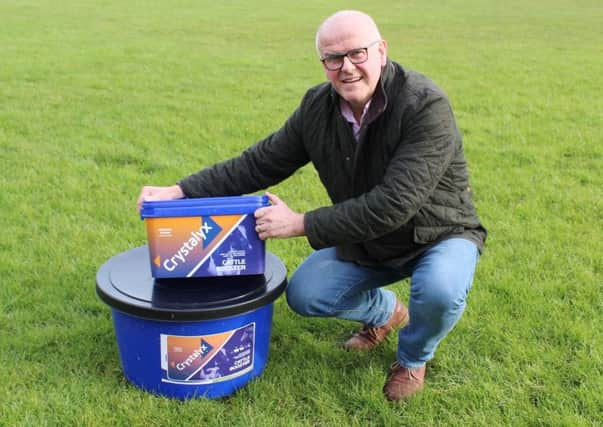Oceans of grass – but how to make best use of it?


“This is truly a win:win scenario for farmers,” confirmed David Morgan from Caltech Crystalyx.
“We have just had another dry week with rising temperatures. Grazing conditions are akin to what we would expect for the month of April, not February.
Advertisement
Hide AdAdvertisement
Hide Ad“Weanling beef cattle and heifer replacements are best positioned to benefit from the fresh grass that is available right now without poaching swards.
“In addition to the significant benefits in daily gain that can be achieved from grazing this stock, farmers are also saving significantly on silage and meal feeding costs.
“The high-quality grass that is available on so many farms right now comes with what can only be regarded as a zero price tag.”
David continued: “An additional benefit of grazing out fields now is the enhanced grass growth rates that will be achieved once soil temperatures start to rise later in the spring.”
Advertisement
Hide AdAdvertisement
Hide AdThe Crystalyx representative went on to point out that supplementing available grass with Cattle Booster can significantly and economically improve animal performance.
“Independent trial work carried out at Newcastle University has shown that Cattle Booster increases the rate of forage digestion by rumen bacteria (by up to 10%).
“This stimulates grass intakes due to a reduced gut fill effect, increasing grass intake rather than replacing it.”
David also pointed out that Cattle Booster increases forage digestibility (D value), so animals actually get more energy out of what they eat. He said:
Advertisement
Hide AdAdvertisement
Hide Ad“These benefits continue throughout the grazing season, as long as forage supplies remain plentiful.
“Even autumn grass D value was improved by feeding Cattle Booster, by an average of 6.8%. Increasing D value by six units effectively increases forage energy content by 1MJ/kg dry matter.”
A follow-up grazing trial undertaken at Aberystwyth University with 240kg growing heifers showed that free access to Cattle Booster increased daily liveweight gains by 27% over control heifers. Cattle Booster intakes averaged 108g/heifer/day.
“Cattle Booster provides all the minerals, trace elements and vitamins needed to balance grass, which is essential for optimum animal performance and health,” explained the Crystalyx representative.
Advertisement
Hide AdAdvertisement
Hide Ad“But the rumen bugs also need minerals to help them digest the grass and the little and often trickle feeding system supplied by Cattle Booster is an ideal method of ensuring this.
“Cattle Booster also provides a concentrated source of sugar. This is important to help maintain rumen digestive efficiency.”
David concluded: “Grazed grass is always an excellent source of protein. Again, Cattle Booster has been specifically formulated to ensure that young stock can make best use of this critical component of their diet.
“The end result is the attainment of maximum growth rates.”